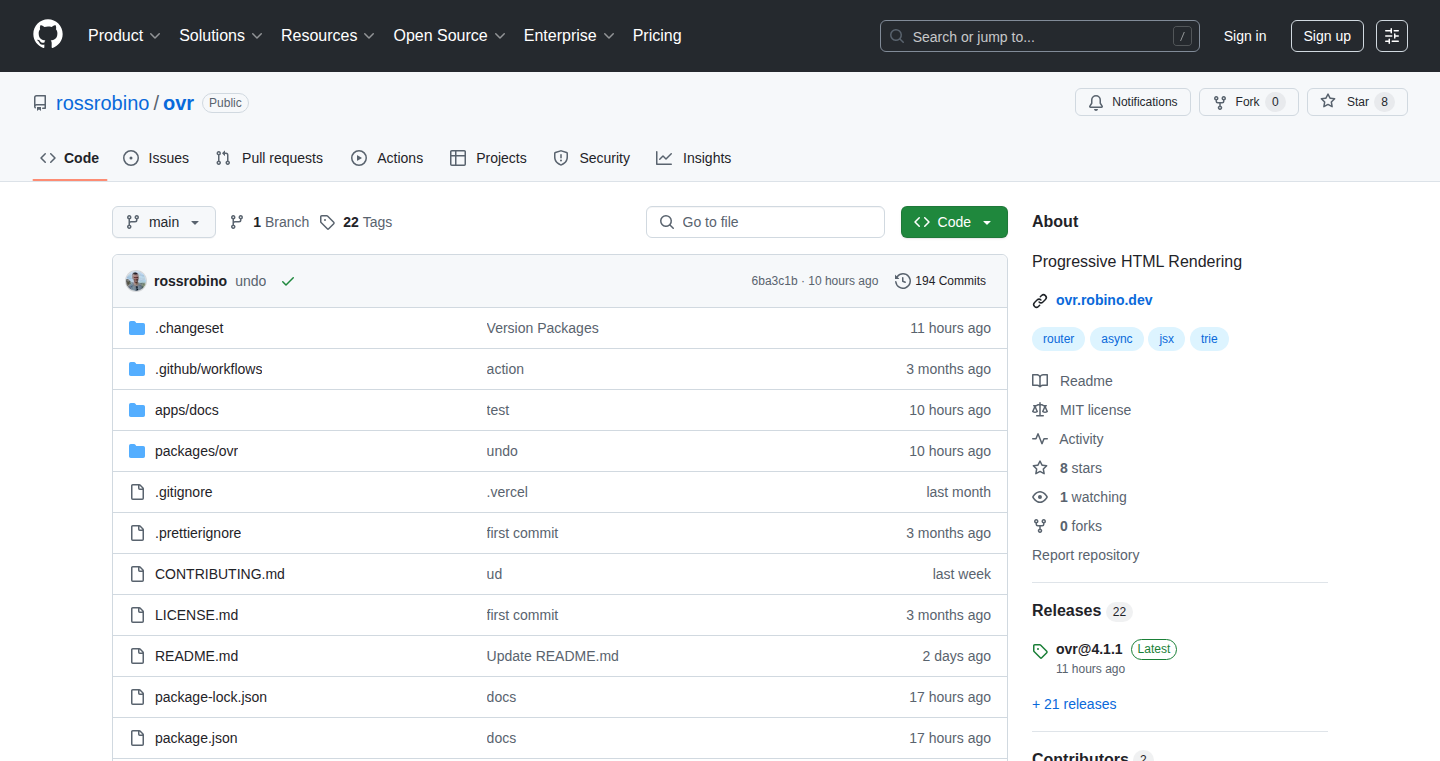

Highlight 1
ovr significantly enhances loading speeds for web applications through its efficient streaming architecture.
Highlight 2
The seamless integration of built-in routing components simplifies route management for developers, reducing boilerplate code.
Highlight 3
By providing true server-side rendering without the need for hydration, ovr minimizes complexity and improves performance.

Improvement 1
Documentation can be expanded to include more examples and use cases to help developers better understand how to implement ovr.
Improvement 2
Increased community engagement could enhance support and resource sharing among users and developers.
Improvement 3
A more intuitive setup or installation process would benefit new users transitioning to this framework.
Product Functionality
Consider adding more advanced debugging tools or error tracking features to assist developers during implementation.
UI & UX
Enhancing the website's design for better user experience, making it more visually appealing and easier to navigate.
SEO or Marketing
Implement strategies such as regular blog posts on use cases and best practices to generate traffic and engage potential users.
MultiLanguage Support
Implement multi-language support to cater to a wider audience, starting with major programming languages.
- 1
What is ovr used for?
ovr is a framework used for streaming HTML with JSX, optimizing performance for server-side rendered applications.
- 2
How does ovr improve loading times?
ovr improves loading times by evaluating components in parallel and sending HTML content as it becomes available, allowing browsers to start parsing without delay.
- 3
Can I manage routes easily with ovr?
Yes, ovr includes built-in helpers for managing routes, enabling developers to define GET and POST routes and synchronize them with navigation components.
